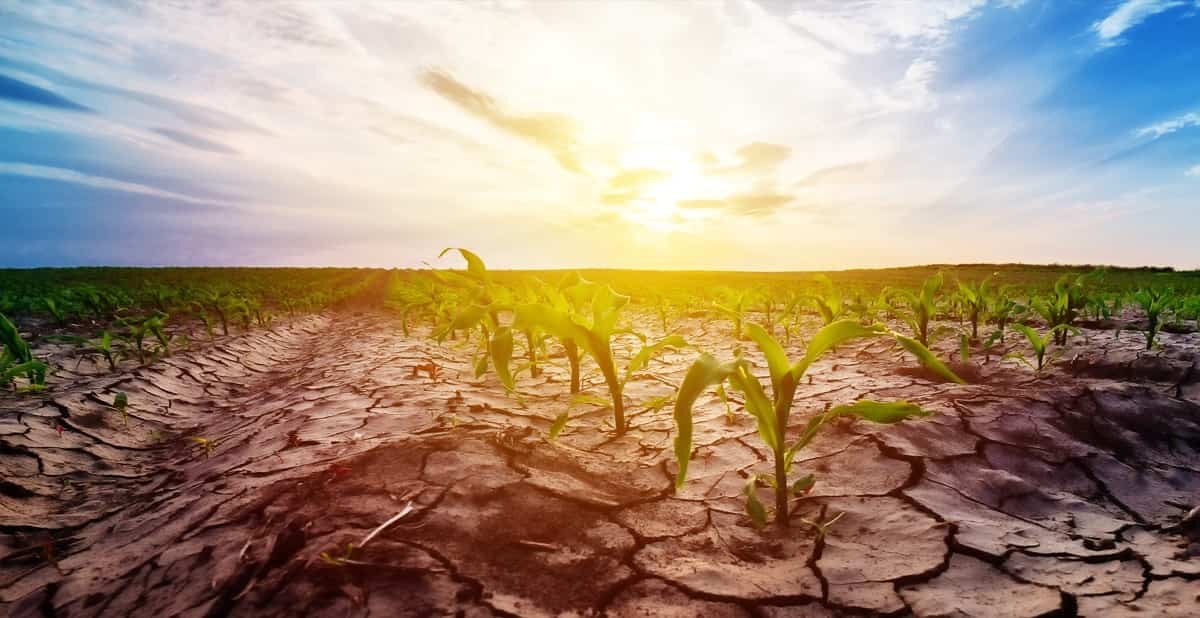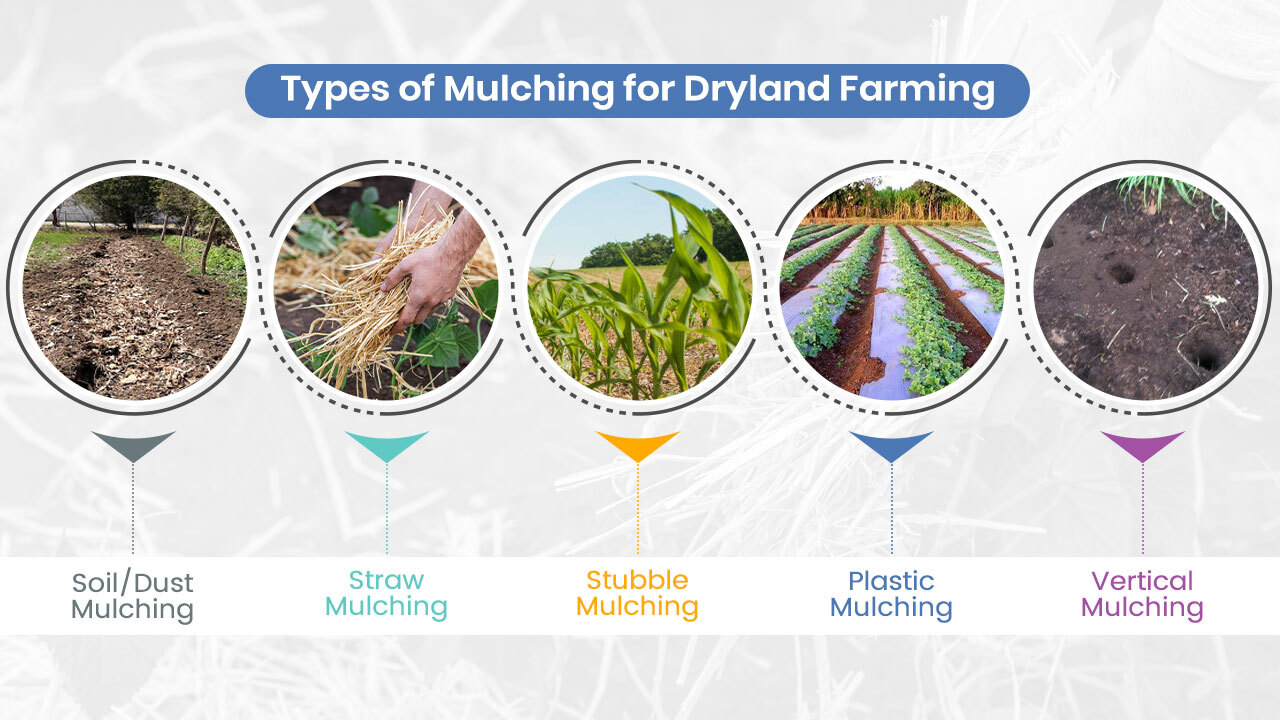DRYLAND FARMING

Dryland farming relies on the natural water cycle to provide moisture for crops. This means that farmers must be careful to manage their land in a way that minimizes water loss. Some of the key practices of dryland farming include:
- Conservation tillage: This involves minimizing the disturbance of the soil, which helps to keep moisture in the ground.
- Crop rotation: This helps to maintain soil fertility and prevent pests and diseases.
- Mulching: This helps to protect the soil from the sun and wind, which helps to prevent evaporation.
- Water harvesting: This involves collecting and storing rainwater for use during dry periods.

Here are some key aspects of dryland farming:
-
Crop Selection: Dryland farmers typically choose drought-resistant crop varieties that can thrive with minimal water. These crops are adapted to arid conditions and can withstand periods of water scarcity. Examples of such crops include millet, sorghum, chickpeas, and certain varieties of wheat.
-
Conservation Tillage: Conservation tillage techniques are used to minimize soil erosion and retain moisture. Farmers reduce or eliminate plowing and use methods such as no-till or minimum tillage to disturb the soil as little as possible.
-
Rainwater Harvesting: Collecting and storing rainwater is essential for dryland farming. Techniques like building check dams, contour farming, and constructing water catchment systems help capture and store rainwater for irrigation during dry periods.
-
Crop Rotation: Crop rotation is practiced to improve soil fertility and reduce the risk of soil depletion. Leguminous crops, like lentils and peas, are often included in the rotation because they can fix nitrogen in the soil.
-
Drought-Resistant Farming Practices: Dryland farmers employ a range of drought-resistant farming practices, such as mulching, which helps retain soil moisture, and using drought-tolerant cover crops to protect the soil from evaporation.
-
Soil Management: Soil health is crucial in dryland farming. Farmers use organic matter, such as compost and crop residues, to improve soil structure and water retention capacity.
-
Climate-Adapted Farming Calendar: Dryland farmers typically follow a farming calendar adapted to the local climate, planting crops during the rainy season to take advantage of available moisture.
-
Risk Mitigation: Dryland farming is inherently risky due to variable rainfall. Farmers often employ risk management strategies, such as diversifying crops and income sources, to mitigate the impact of crop failures.
-
Technology and Research: Advancements in agricultural technology and research have led to the development of drought-resistant crop varieties and improved farming practices for dryland areas.
- The Centre and the Planning Commission, had back in the 1960s realised that it wasn’t possible to support agriculture growth in the rainfed regions by replicating the input-intensive strategy adopted in the better-endowed Green Revolution belt of north-western India or even the larger Indo-Gangetic plains
- Thus, a series of initiatives were launched to take a natural resource management (NRM) based approach for promoting farm growth in rainfed areas. Schemes such as the Drought Prone Areas Programme and the Desert Development Programme were implemented in select watersheds to demonstrate the benefits of a holistic and integrated NRM-based approac
- Following the twin drought of 1986 and 1987 similar to the ones in the last two years the Centre intensified its efforts at agricultural improvement in rainfed regions through the National Watershed Development Project for Rainfed Areas, which was directly funded by the agriculture ministry
- In parallel, the ministries of rural development and environment & forests launched their own watershed development schemes.
- The NABARD, too, set up a special Watershed Development Fund in 1990, to support projects in 100 key districts.
- Many of these projects even received liberal funding from bilateral donors and multilateral lenders. Everyone seemed convinced of the NRM-based approach for rainfed areas
- The watershed management schemes had a simple objective: to capture rainfall and runoff on and near the farmer’s field, thereby extending the period of water availability.
- This would lower the risks in agriculture, while also creating opportunities for crop diversification.
- Critical to the success of the schemes was people’s participation through watershed committees and self-help groups, facilitated through collaboration between local communities, civil society organisations and government agencies.
- NGOs were involved extensively during the 1980s and 1990s in the planning and implementation of watershed projects in many states.
- Several studies, whether by official and multilateral agencies or academic institutions, gave a broad thumbs-up to the NRM/watershed-based projects undertaken in rainfed areas
|
For Prelims: Rabi Crops, Kharif Crops, Types of farming, Sustainable farming, Organic farming, Commercial farming
For Mains: 1.Explain the concept of subsistence farming and its significance in the context of food security in developing countries
2.Discuss the main characteristics and challenges of subsistence farming in India. How can government policies support small-scale subsistence farmers?
|




